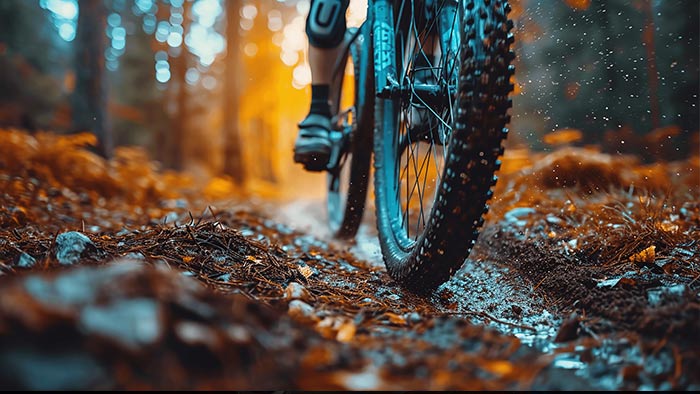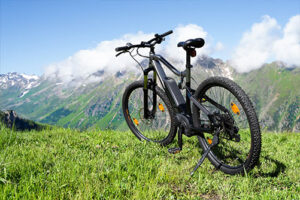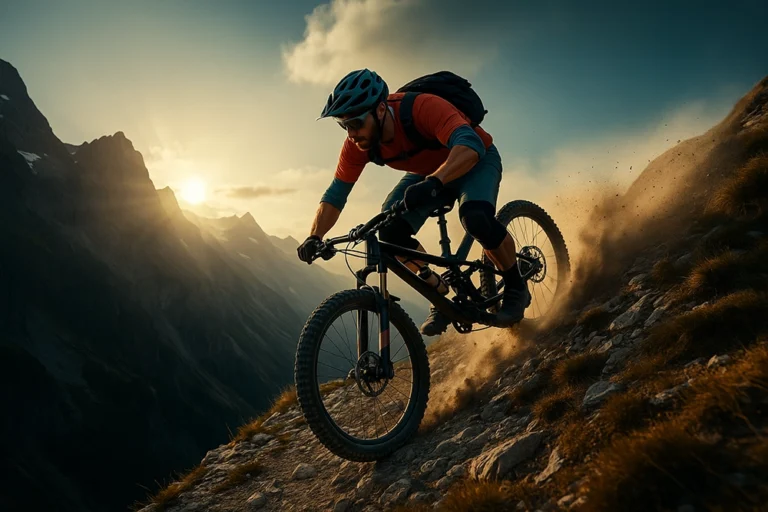The moment I veered off the smooth asphalt onto that first stretch of crushed limestone, everything changed. After a decade of road cycling—carbon frames, skinny tires, and an obsession with Strava segments—I found myself grinning like a kid as my new electric gravel bike floated over terrain I would have previously avoided at all costs.
If you're a dedicated roadie considering the leap to electric gravel, you're about to discover a whole new dimension of cycling. But it's not just about wider tires and motor assistance—it's an entirely different approach to riding. Here's what I wish someone had told me before my transition.
The Riding Experience: An Entirely New Sensation
The "Float vs. Flight" Feeling
Road cycling often feels like flying—you're perched on a precision machine, skimming the surface at speed. Gravel riding, particularly on an e-bike, feels more like floating. The combination of more upright geometry, wider tires, and electric assistance creates a sensation of gliding over the terrain rather than fighting it.
During my first proper gravel descent, I kept reaching for brake levers that weren't where my muscle memory expected them to be. But once I relaxed into the bike's more stable handling, I found myself carrying speed through loose corners that would have sent my road bike skittering.
The Changing Relationship with Speed
On a road bike, average speed is everything. On an electric gravel bike, it becomes almost irrelevant. My first few rides, I kept glancing down at my computer, disappointed by numbers that seemed pedestrian compared to my road rides.
Then I realized I was missing the point completely. My "slow" 14 mph average had taken me through dense forests, alongside pristine creeks, and up steep climbs that would have been miserable without assistance. The focus shifts from "how fast" to "where can I go?"
The Technical Adjustments: More Than Just Wider Tires
Handling Differences You'll Notice Immediately
Your muscle memory will need reprogramming:
- Braking points come sooner: The added weight of the motor and battery means starting your braking earlier than you would on a road bike.
- Steering feels more deliberate: The longer wheelbase and relaxed geometry make quick direction changes less immediate but provide remarkable stability on rough descents.
- Weight distribution shifts: With a motor and battery adding pounds to the frame, the bike's center of gravity changes. Learning to use this weight to your advantage takes practice, especially in corners.
After about three rides, I stopped oversteering in corners—a common roadie habit that doesn't translate well to looser surfaces. By ride five, I was comfortably drifting through turns with a level of confidence I never expected.
Power Delivery Is Different
If you're coming from a traditional road bike, the immediate torque of an electric motor will surprise you. A few things to expect:
- Instantaneous assistance can be jarring: Most e-gravel bikes engage power quickly, which can catch you off-guard if you're used to the gradual acceleration of a road bike.
- Climbing cadence changes: You'll find yourself spinning at higher cadences (85-95 rpm) on climbs rather than grinding in a big gear.
- Power surges require adaptation: When the motor kicks in on loose surfaces, your back wheel might spin out if you're not weighted properly.
I spent my first week in the lowest assistance mode just to acclimate to the feeling. By week two, I was confidently using the full power range and learning to modulate the assistance based on terrain.
Gear and Equipment: Prepare for Changes
Your Wardrobe Will Evolve
My closet reflects my gravel conversion:
- Less lycra, more versatility: While I still wear bibs on longer rides, I've added mountain bike shorts and more casual tops to my rotation.
- Shoe changes: Those ultra-stiff carbon road shoes aren't ideal when you might need to hike sections. I switched to mountain bike shoes with recessed cleats and walkable soles.
- Layer differently: Gravel rides often take you through more varied microclimates and temperatures than road rides. Packable layers become essential.
Perhaps the most liberating change was ditching the unwritten road cycling fashion rules. Nobody on gravel paths cares if your socks match your jersey.
Accessory Priorities Shift
The must-haves change when you leave the pavement:
- Hydration and storage needs increase: Without convenience stores every few miles, carrying more water becomes crucial.
- Tool kit expands: I now carry a more comprehensive tool selection, including a tubeless plug kit, mini-pump, and multi-tool with chain breaker.
- Navigation becomes essential: While I rarely needed GPS on familiar road routes, exploring remote gravel paths has made reliable navigation non-negotiable.
The transition taught me self-sufficiency. When you're 20 miles from civilization on unmarked forest roads, that extra tube and emergency snack aren't just conveniences—they're necessities.






